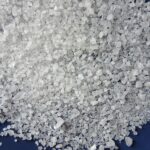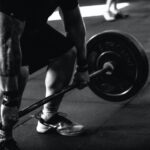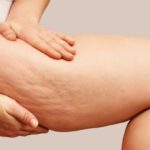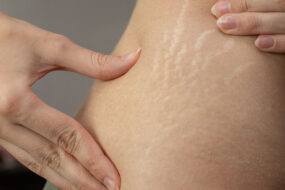
Sweating is often seen as an indication of a hard workout, but many people are unaware of how sweating can affect your body and weight. This guide will provide comprehensive information about whether or not you lose weight when you sweat.
Table of Contents (click to expand)
What is sweating?
Sweating, also called perspiration, is a natural human reaction that occurs when the body temperature rises due to exertion or emotions. This process is regulated by sweat glands situated all over our body.
Our bodies produce and release more sweat when our internal body heat increases, causing our core body temperature to rise. The moisture released from these glands evaporates from the skin’s surface and helps cool us down.
Related: How to Eat Flax Seeds for Weight Loss
Sweat usually contains water and salt, but small amounts of other substances, such as urea or ammonia, may also be present.

Does sweating burn calories and help with weight loss?
Have you ever wondered if sweating can help with weight loss? The answer is yes! Sweating is the body’s natural way of generating internal body heat to cool down. You are burning calories and fat, leading to noticeable weight loss over time. Regular sweating can burn fat, reduce water weight, and help you reach your desired fitness goals.
When it comes to losing weight, there are many factors at play. Not only does physical activity like exercise help promote steady weight loss, but so does sweating. It has been proven that burning calories through sweat helps contribute significantly to achieving long-term results.
Even after just one intense workout session or a cardio session in the sauna, you may have noticed that you have lost a few pounds due to lost water weight and the calories and fat burned during sweat sessions.
Sweat sessions can provide an extra boost for those looking for additional ways to supplement their fat-burn efforts with exercise and healthy eating habits. Regularly sweating through exercise or activities like hot yoga or running helps keep your metabolism burning while also helping flush out toxins from the body. Furthermore, sweat burns more calories than any other form of exercise – even when you’re not moving much – this can significantly improve the chances of successful weight-loss results.
If done correctly and consistently, sweat sessions can effectively decrease water retention, assist with burning fat, and generate internal body heat – all positive steps toward successful long-term weight loss. Losing weight doesn’t need hard work; it can be achieved without too much effort simply by adding regular sweat sessions into your day!
Related: When Do You Notice Weight Loss?
Factors that affect sweat output
When trying to maximize your calorie and fat-burning potential, understanding all the factors that affect sweat output is key. Genetics, environment, body shape, size, and clothing affect how much you’ll sweat and how rapidly you burn calories during workouts.
And if you’re looking for ways to enhance your results further, investing in lightweight sweat clothing can really help regulate temperature efficiently, allowing heat to dissipate dispersively throughout your entire body as you go about your routine.
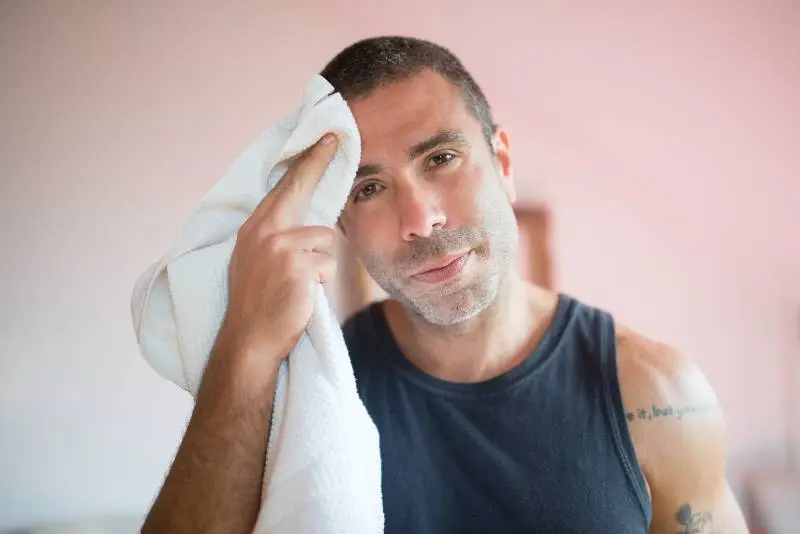
Other benefits of sweating buckets during workouts
Excessive sweating during workouts isn’t just about cooling off; it’s also been linked with aiding detoxification processes within the human body. This is why people often feel heavy after a particularly exhausting session.
Additionally, this process helps remove excess fluid from lymphatic nodes around the torso and legs, which could result in less strain on the heart over time and ultimately reduce the risk for cardiovascular diseases down the road too!
Health hazards associated with excessive sweating
Sweating is a natural process the body uses to cool down and regulate its core temperature. However, excessive sweating can lead to multiple health hazards.
The process of sweating involves the production of sweat from tiny glands located within the skin cells. As such, when the core body temperature increases, sweat glands are activated and cause perspiration. People with fewer sweat glands tend to sweat more than those with more active glands because their bodies lack efficient cooling systems.
Losing weight or burning fat can also contribute to increased perspiration. As the fat layers in our bodies decrease due to burning fat, fewer layers protect our skin from circulating air—causing it to become irritable and overheat, leading to physical discomfort and excessive sweating.
Related: How to Make Lemon Water for Weight Loss
Excessive sweating can cause dehydration and skin irritation and put an individual at risk for diseases such as hyperhidrosis and heat stroke. Hyperhidrosis is a medical condition where individuals experience abnormally high levels of perspiration, even at rest or without exercise. Heatstroke is another severe condition caused by too much exposure to hot temperatures, which can damage the brain or other organs if not treated immediately.
Maintaining a healthy lifestyle through proper dieting and exercise is essential to prevent excessive sweating, which may lead to health hazards associated with this condition. Eating foods rich in antioxidants like fruits and vegetables can reduce inflammation that leads to irritation in our skin cells which could be another significant contributor to increased sweating levels and calorie burn for us to reach optimal health status through better body composition results from the lost weight.

How to manage and minimize excess sweat production
Sweating is a natural part of physical activity, but it can be uncomfortable and embarrassing if you sweat more than the average person. The good news is that there are plenty of ways to manage and minimize excess sweating.
Related: How to Jump Start Your Weight Loss Journey
To begin with, wearing clothes made from breathable materials will help reduce the amount of sweat produced. Additionally, drinking plenty of water throughout the day will help maintain a healthy lifestyle and prevent dehydration-related sweating. Regular breaks between physical activities also help limit hormone elevations that can cause excessive perspiration.
Other methods include adopting a healthy diet and lifestyle habits such as quitting smoking or substance abuse (if applicable). Calming meditation techniques can also assist in cooling down and reducing overall body temperatures. Redistributing uniform temperatures around different areas of your body is much easier when you utilize several of these strategies together daily.
Suppose several of these methods have already been incorporated into your daily routine. In that case, chances are better that you will find a solution for managing your excessive sweating sooner rather than later. Eventually, things should start to stabilize and return to normalcy – remain patient and put consistent effort into achieving your end goal if you want to experience the same amount of success in the long run.
Related: How to Raise Your Core Body Temperature for Weight Loss
Summary
In summary, though sweating benefits those looking to lose weight due to its ability to promote calorie-burning abilities, numerous associated health risks must be considered before approaching the subject matter head-on, including severe dehydration, cases of heat stroke, and sunburn.
Appropriately managing and minimizing output in frequency and extent is the key to ensuring everything goes smoothly. Regardless of what type of activity is being undertaken to lose weight, progress should be appropriately monitored and monitored along the way to avoid any potentially hazardous situations that may arise unexpectedly.
The process will depend on personal preference regarding how individuals handle the situation; making necessary adjustments to maintain a balance between the individual’s safety should become a priority!





